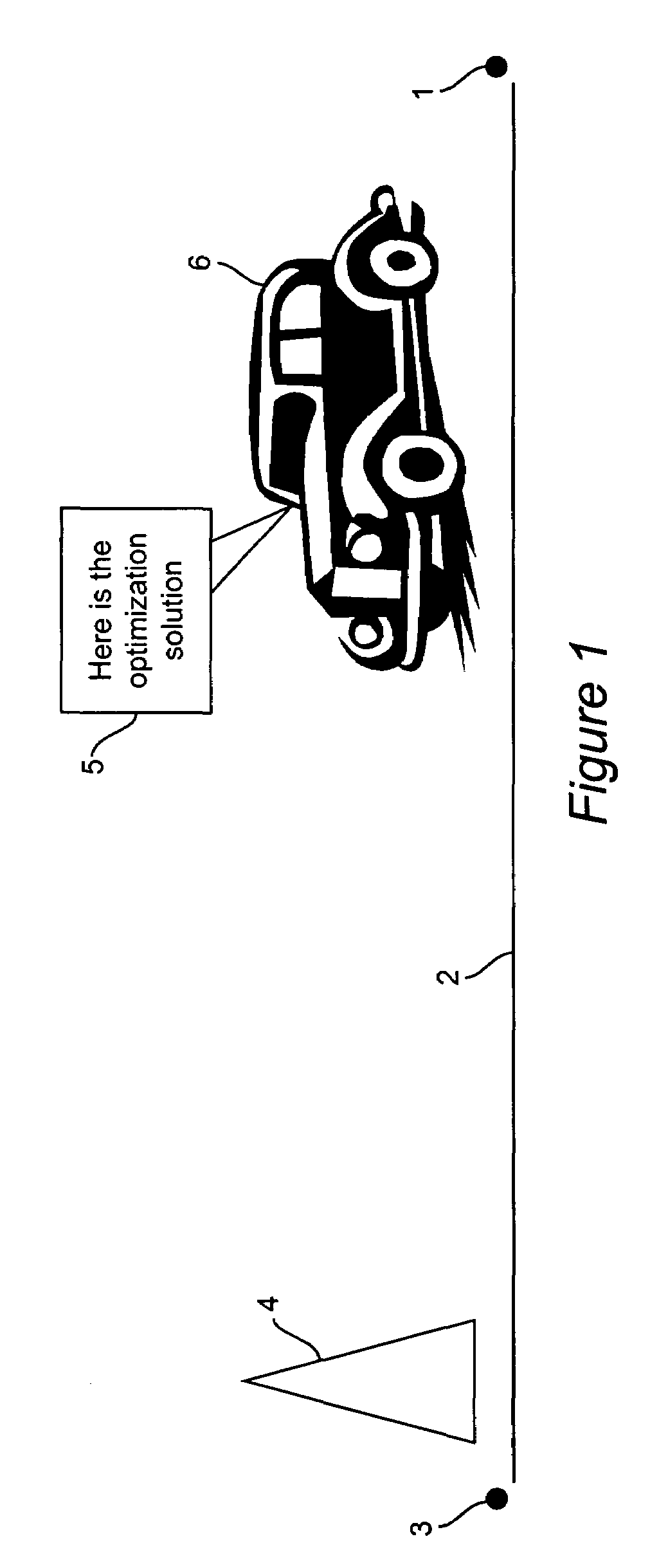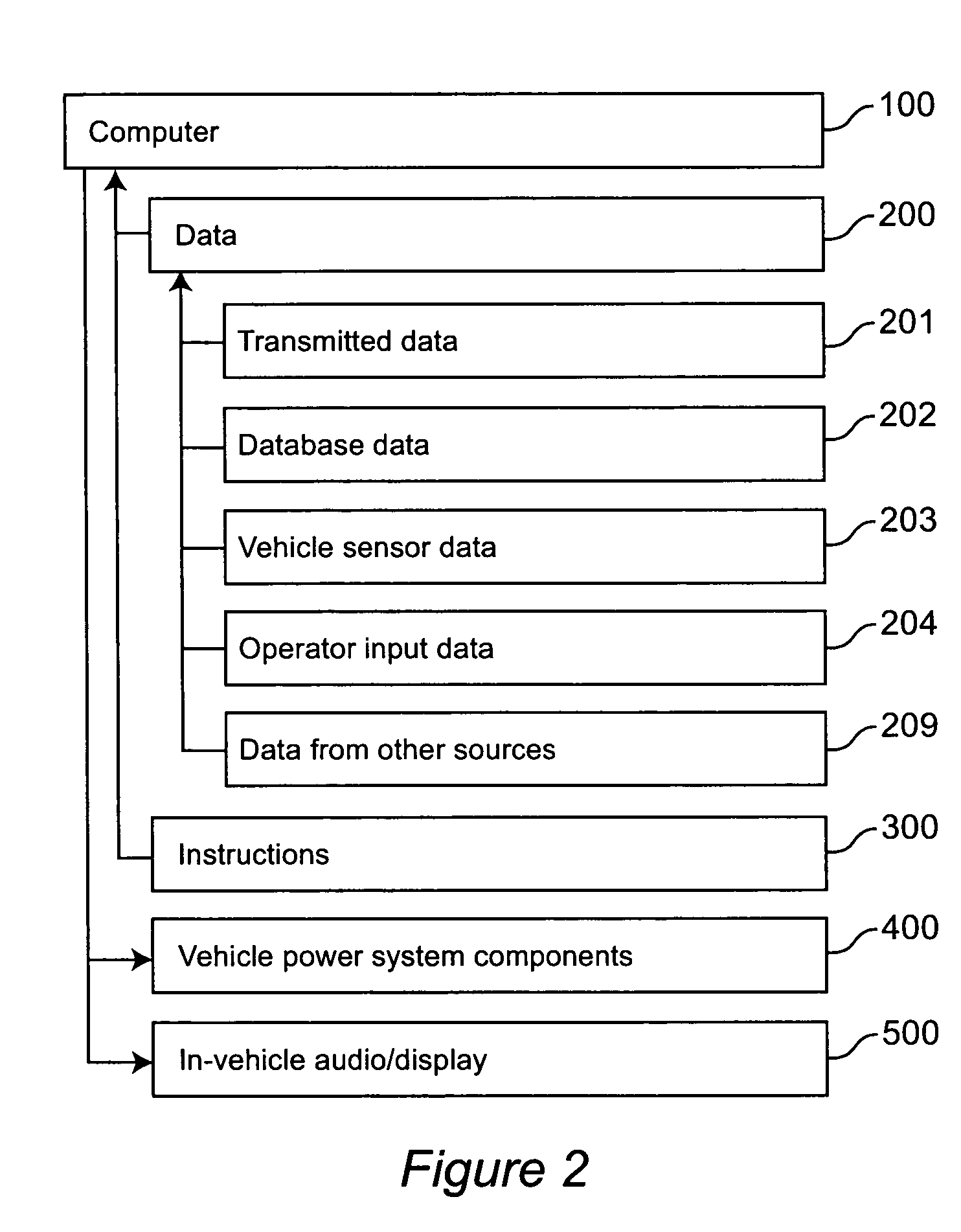System and method for minimizing energy consumption in hybrid vehicles
a technology for hybrid vehicles and energy consumption, applied in the direction of driver interaction, external condition input parameters, gas pressure propulsion mounting, etc., can solve the problem that the cost of recharging is directly proportional to the cost of consumable fuel, and the useful range of the vehicle is limited, so as to achieve the effect of reducing the energy cost of the trip
- Summary
- Abstract
- Description
- Claims
- Application Information
AI Technical Summary
Benefits of technology
Problems solved by technology
Method used
Image
Examples
Embodiment Construction
[0022]Referring now to the drawings, and more particularly to FIG. 1, there is shown a hybrid vehicle 6 traveling on an itinerary that leads from an original location 1 along a route 2 to a destination 3. Along the route, there is at least one external power source 4 suitable for recharging. The hybrid vehicle 6 includes an audio and / or visual display 5 by which a computer can provide output to an operator for additional input. The audio and / or visual display 5 of FIG. 1 is exemplary of the audio and / or visual display 500 of FIGS. 2–4.
[0023]Referring now to FIG. 2, there is shown a computer 100 receiving as inputs data 200 and instructions 300. The data 200 may come from various sources, such as transmitted data 201, database data 202, vehicle sensor data 203, operator input data 204, and data from other sources 205. FIG. 2 also shows that outputs from the computer 100 may go directly to vehicle power system components 400 or may be presented to the operator via an in-vehicle audio ...
PUM
 Login to View More
Login to View More Abstract
Description
Claims
Application Information
 Login to View More
Login to View More - R&D
- Intellectual Property
- Life Sciences
- Materials
- Tech Scout
- Unparalleled Data Quality
- Higher Quality Content
- 60% Fewer Hallucinations
Browse by: Latest US Patents, China's latest patents, Technical Efficacy Thesaurus, Application Domain, Technology Topic, Popular Technical Reports.
© 2025 PatSnap. All rights reserved.Legal|Privacy policy|Modern Slavery Act Transparency Statement|Sitemap|About US| Contact US: help@patsnap.com



